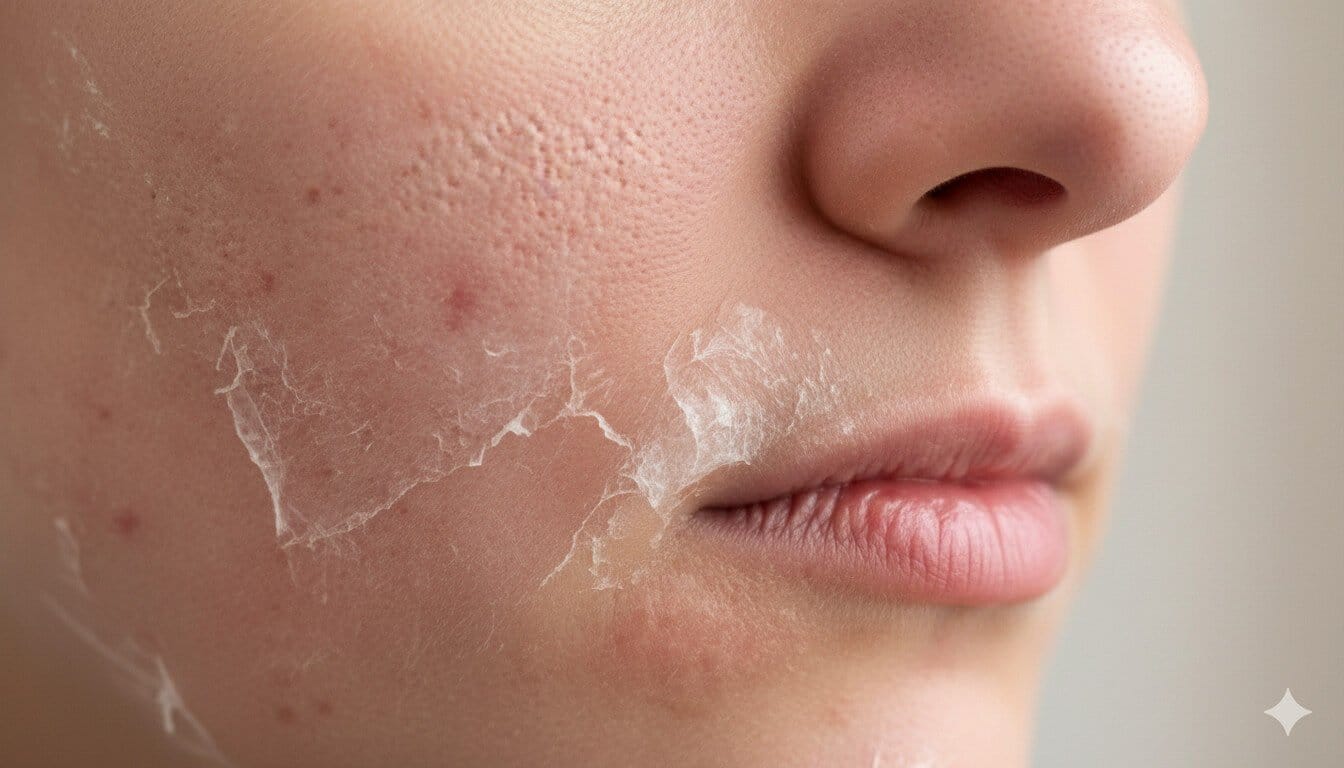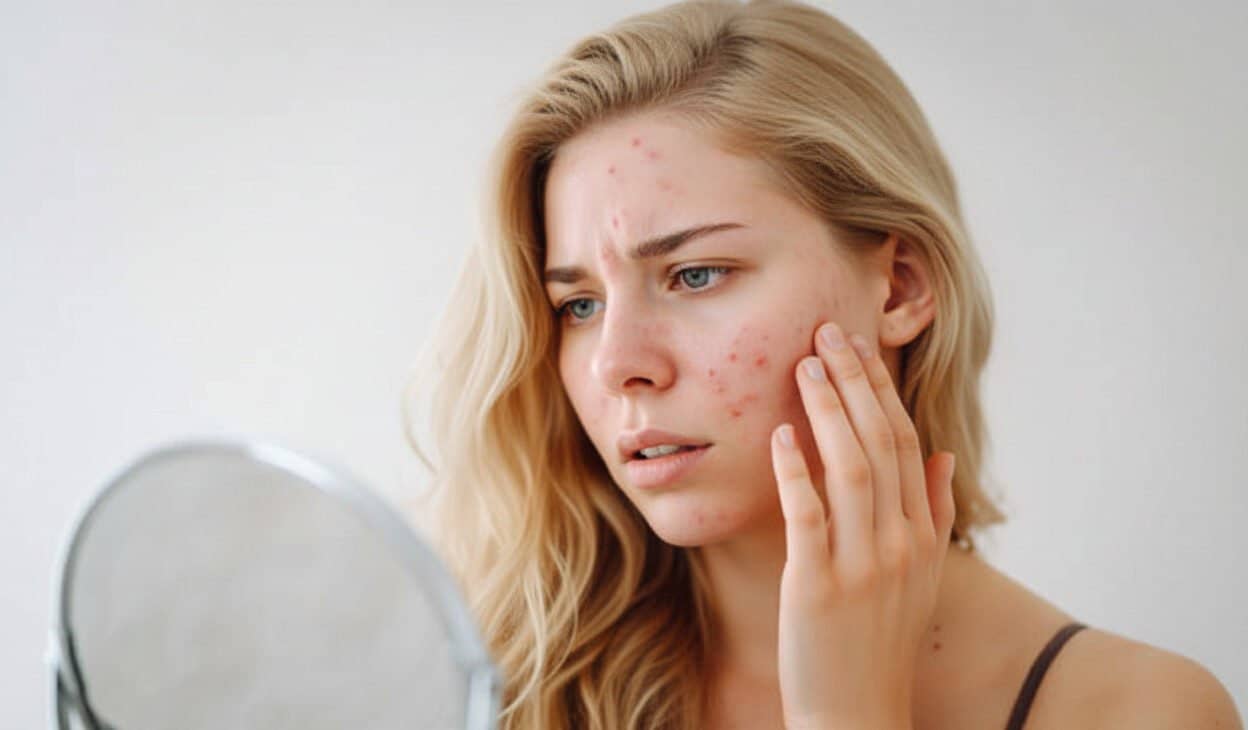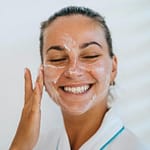Top 10 Home Treatments for Hives Rash on the skin

- Tips to Treat Hives
- Tip 1: Apply a Cold Compress
- Tip 2: Take an Oatmeal Bath
- Tip 3: Use Aloe Vera Gel
- Tip 4: Dab with Diluted Apple Cider Vinegar
- Tip 5: Try a Chamomile Tea Compress
- Tip 6: Moisturize Frequently
- Tip 7: Use Fragrance-Free Products
- Tip 8: Wear Loose, Breathable Clothing
- Tip 9: Manage Stress Levels
- Tip 10: Keep a Trigger Journal
- Importance
- How to Solve this issue?
- Skincare Strategies
- Brand Products to Use
- FAQs
Hives, medically termed urticaria, are red, raised, itchy welts that appear suddenly, often causing significant discomfort and frustration. These swollen patches can emerge on the face, arms, legs, torso, or even the neck, triggered by allergens like pollen or foods, irritants like soaps, stress, medications, or environmental factors such as heat. While hives typically fade within hours or a few days, their intense itching can disrupt sleep, work, or daily routines, making quick relief essential. The good news? You can manage mild hives effectively at home without relying solely on medications. This comprehensive guide shares 10 practical, natural tips to treat hives, designed for sensitive, dry, or combination skin. These beginner-friendly solutions use accessible ingredients and gentle practices to soothe irritation and prevent recurrence. For example, many rely on household staples like oatmeal or aloe vera for fast relief. We’ll also recommend trusted products and answer common questions to help you manage hives safely and confidently. Let’s dive into these effective tips to restore your skin’s comfort and calm those pesky welts!
Tips to Treat Hives
Tip 1: Apply a Cold Compress
A cold compress is a quick, effective way to reduce itching and swelling in hives, offering immediate relief for acute flare-ups. Prolonged use without moisturizing can dry skin, so moderation is key. Wrap ice cubes in a clean, soft cloth or use a cold, damp towel and gently apply to affected areas for 10 to 15 minutes, 2 to 3 times daily. For instance, this soothes hives on the arms caused by heat or sun exposure. Avoid direct ice contact to prevent skin damage, and always follow with a fragrance-free moisturizer to maintain hydration. This simple tip calms inflammation, reduces redness, and eases discomfort, making it a go-to for sudden hive outbreaks, especially in warm weather or after allergen exposure.
Tip 2: Take an Oatmeal Bath
Oatmeal contains anti-inflammatory compounds called avenanthramides, which soothe itchy hives, particularly those triggered by allergic reactions or irritants. To prepare, grind 1 cup of plain, unflavored oatmeal into a fine powder using a blender or food processor. Add it to a lukewarm bath, avoiding hot water to prevent worsening irritation, and soak for 15 to 20 minutes. Pat dry gently with a clean towel and apply a fragrance-free moisturizer immediately. For example, this relieves widespread hives on the legs from pet dander. Use once daily for 3 to 4 days, ensuring oatmeal is pure to avoid additives. This gentle tip reduces itching and inflammation, offering comfort for sensitive skin and promoting faster healing during flare-ups.
Tip 3: Use Aloe Vera Gel
Aloe vera’s cooling, anti-inflammatory, and hydrating properties make it excellent for calming hives and reducing redness. It’s gentle for most skin types but requires a patch test to rule out allergies. Apply fresh aloe vera gel extracted from a plant leaf or 100% pure store-bought gel to hives. Spread a thin layer, leave for 15 to 20 minutes, and rinse with lukewarm water. Use 1 to 2 times daily for 3 to 5 days. For instance, this soothes facial hives from pollen or makeup. Test on a small patch, like your wrist, to avoid reactions. This natural tip promotes healing, eases irritation, and feels refreshing, providing a chemical-free alternative to over-the-counter creams for mild hive relief.
Tip 4: Dab with Diluted Apple Cider Vinegar
Apple cider vinegar (ACV) balances skin pH and has antimicrobial properties, reducing itching from hives caused by irritants like sweat or soaps. Undiluted ACV can burn sensitive skin, so proper dilution is critical. Mix 1 part ACV with 3 parts water, apply gently with a cotton pad, leave for 5 minutes, and rinse with lukewarm water. Use once daily for 3 to 4 days. For example, this calms hives on the neck from a fragranced lotion. Test on a small patch to avoid stinging, especially on sensitive areas. This tip fights inflammation, prevents bacterial growth, and offers quick relief, making it a versatile option for managing localized hives effectively.
Tip 5: Try a Chamomile Tea Compress
Chamomile’s anti-inflammatory and calming properties soothe hives triggered by allergens like pet dander or pollen. Those allergic to ragweed or related plants should proceed cautiously. Brew a strong tea using 2 chamomile tea bags in 1 cup of hot water, cool it completely, and soak a clean cloth in the liquid. Apply to hives for 10 to 15 minutes, rinsing gently afterward. Use 1 to 2 times daily for 3 to 5 days. For instance, this works well for arm hives from perfume exposure. Test on a small patch first to ensure no reaction. This tip reduces redness and itching, providing a gentle, natural solution for hive relief, especially for sensitive skin.
Tip 6: Moisturize Frequently
Dry skin exacerbates hive itching, prolonging discomfort and irritation. Frequent moisturizing with fragrance-free, hypoallergenic products helps maintain skin hydration and strengthens the barrier. Apply a non-comedogenic moisturizer with ceramides or hyaluronic acid 2 to 3 times daily, especially after bathing or remedies. For example, this soothes hives on hands caused by dry air or frequent washing. Choose creams over lotions for thicker hydration in eczema-prone areas. This tip reduces irritation, prevents scratching, and enhances other remedies’ effectiveness, keeping skin calm and comfortable during hive flare-ups.
Tip 7: Use Fragrance-Free Products
Fragranced soaps, lotions, or detergents often trigger or worsen hives, especially on sensitive skin. Switching to fragrance-free, hypoallergenic products prevents irritation and flare-ups. Use a gentle cleanser and moisturizer labeled “for sensitive skin” daily, applying after remedies to lock in moisture. For instance, this reduces hives on the torso from a scented body wash. Check product labels for “fragrance-free” to ensure safety. This tip minimizes triggers, supports skin healing, and prevents future outbreaks, making it a cornerstone of hive management for all skin types.
Tip 8: Wear Loose, Breathable Clothing
Tight or synthetic fabrics like polyester trap heat and sweat, aggravating hives and increasing itchiness. Loose, breathable cotton clothing reduces friction and keeps skin cool. Wear cotton shirts, pants, or socks over affected areas, especially after applying remedies. For example, this helps hives on the legs from tight jeans. Wash new clothes with a hypoallergenic detergent to remove dyes or chemicals. This tip prevents irritation, supports remedy effectiveness, and keeps skin comfortable, reducing the risk of new flare-ups during daily activities.
Tip 9: Manage Stress Levels
Stress triggers histamine release, worsening hives and prolonging flare-ups. Practicing stress-relief techniques helps calm the body and skin. Try deep breathing, meditation, or yoga for 5 to 10 minutes daily. For instance, inhale for 4 seconds, hold for 4, exhale for 6 to lower stress hormones. Journaling, stretching, or a short walk can also reduce tension. This tip decreases histamine-driven flare-ups, supports skin health, and boosts overall well-being, making it essential for preventing stress-induced hives and enhancing other remedies.
Tip 10: Keep a Trigger Journal
Identifying triggers like foods, medications, or environmental factors prevents hive recurrence. Keep a detailed journal to note when hives appear and potential causes, such as eating shellfish or using a new soap. For example, logging hives after a stressful day or a new medication can pinpoint culprits. Review entries weekly to avoid triggers and adjust habits. This proactive tip customizes your skincare and lifestyle, reducing flare-ups and maximizing the effectiveness of other remedies, helping you maintain clearer, calmer skin.
Importance
What Are Hives?
Hives, or urticaria, are red, raised, itchy welts caused by histamine release in response to allergens (e.g., pollen, foods, pet dander), irritants (e.g., soaps, cosmetics), stress, medications, or environmental factors like heat or cold. They appear as swollen patches on the face, arms, legs, torso, or neck and typically fade within hours or days. Chronic hives, lasting over 6 weeks, may indicate an underlying issue requiring medical evaluation. For example, hives from a new detergent can emerge on the arms overnight. Understanding triggers is crucial for effective at-home management and prevention of recurrent outbreaks.
Why These Tips Work
These tips target hives’ primary symptoms: itching, swelling, and inflammation. Cold compresses, chamomile, and aloe vera soothe irritation and reduce redness, while oatmeal and frequent moisturizing hydrate and calm skin. ACV balances pH, and fragrance-free products and breathable clothing prevent trigger exposure. Stress management reduces histamine release, and journaling identifies causes. Therefore, this multi-faceted approach soothes hives naturally, complements gentle skincare routines, and prevents recurrence, offering relief without heavy reliance on medications.
Benefits of At-Home Hive Care
These tips provide fast relief from itching and redness using affordable, natural ingredients, making them accessible for most households. They’re safe for sensitive or dry skin and reduce the need for antihistamines or steroids. Moreover, they prevent flare-ups, promote skin comfort, and minimize irritation. Consistent use can clear mild hives within hours or days, boosting confidence and well-being. For example, these solutions empower you to manage hives at home, saving time and money while avoiding complex treatments for minor cases, all while keeping skin healthy.
How to Solve this issue?
Daily Skincare Routine for Hives
Establish a gentle skincare routine to support hive relief. Cleanse affected areas once or twice daily with a fragrance-free, hypoallergenic cleanser, using lukewarm water to avoid irritation. Pat dry gently with a clean, soft towel to prevent friction. Apply a remedy like aloe vera or a cold compress 1 to 2 times daily, followed by a fragrance-free moisturizer to lock in hydration. For example, this soothes arm hives triggered by pollen exposure. Avoid scented products or abrasive scrubs, which can worsen inflammation. This routine promotes healing, reduces irritation, and prevents new flare-ups, keeping skin calm and comfortable.
Applying Tips Safely
To ensure safety, use one tip at a time, such as an oatmeal bath for widespread hives or a chamomile compress for facial welts. Follow instructions carefully, applying remedies 1 to 2 times daily (e.g., 10 to 15 minutes for compresses). Test each remedy on a small patch, like your inner wrist, to check for allergic reactions. For instance, use diluted ACV for hives from sweat, rinsing thoroughly after use to avoid irritation. Moisturize afterward to prevent dryness. Rotate tips every few days to determine which works best, ensuring targeted, safe relief without overwhelming the skin.
Lifestyle Habits to Prevent Hives
Adopt habits to minimize hive triggers. Wear loose, breathable cotton clothing to reduce irritation from sweat or tight fabrics. Avoid known allergens, such as fragranced soaps, lotions, or foods like shellfish. Drink 2 to 3 liters of water daily to maintain skin hydration, and eat anti-inflammatory foods like berries, leafy greens, or salmon to support skin health. For example, hydration and diet changes reduce dryness that aggravates hives. Shower promptly after sweating to remove irritants like pollen or sweat, using clean towels to avoid bacterial transfer. Keep a trigger journal to track and avoid causes. These habits prevent flare-ups and enhance the effectiveness of your chosen remedies.
When to Seek Medical Advice
Apply these tips consistently for 1 to 3 days to see improvement in mild hives. If hives persist beyond 3 to 5 days, spread rapidly, or are accompanied by severe symptoms like facial swelling, difficulty breathing, or dizziness, consult a doctor immediately, as these may indicate anaphylaxis requiring urgent care. For example, chronic hives lasting over 6 weeks may need antihistamines or medical evaluation. Avoid self-diagnosing severe or persistent cases. Combining these tips with proactive habits offers relief for mild hives while guiding you to seek professional care when necessary, ensuring safe and effective management.
Skincare Strategies
Avoid Known Triggers
Identifying and avoiding triggers is critical for preventing hives. Common culprits include foods (e.g., nuts, shellfish), medications, fragranced products, or environmental factors like pollen or pet dander. For example, switching to a hypoallergenic detergent can prevent hand hives from laundry exposure. Keep a journal to track flare-ups and their causes, such as a new shampoo or stressful event. Check product labels for allergens and avoid known irritants. This strategy reduces recurrence, supports tip effectiveness, and helps maintain clear, comfortable skin.
Use Gentle, Fragrance-Free Products
Fragranced or harsh products can trigger hives, especially on sensitive skin. Choose hypoallergenic, fragrance-free cleansers and moisturizers labeled “for sensitive skin” to minimize irritation. For instance, using a gentle cleanser prevents hives from scented soaps. Apply these products after remedies to lock in moisture and strengthen the skin barrier. Avoid ingredients like alcohol or artificial fragrances, which can sting. This strategy complements natural remedies, ensuring a gentle routine that soothes and protects hive-prone skin.
Maintain Skin Hydration
Dry skin intensifies hive itching and discomfort, making hydration essential. Apply a fragrance-free, non-comedogenic moisturizer with ceramides or hyaluronic acid 2 to 3 times daily, especially after bathing or remedies. Drink 2 to 3 liters of water daily to hydrate from within. For example, this reduces irritation on legs during dry weather. Consistent hydration supports skin repair, prevents scratching, and enhances remedies like aloe vera, keeping skin soft and less prone to flare-ups.
Protect Skin from Environmental Stressors
Environmental factors like heat, cold, sun, or wind can trigger or worsen hives. Wear loose, breathable cotton clothing to shield affected areas, and apply a hypoallergenic sunscreen (SPF 30 or higher) if exposed to sunlight. For instance, covering arms with a cotton sleeve prevents sun-induced hives during outdoor activities. Use a scarf or hat in windy or cold conditions to protect facial skin. This strategy minimizes triggers, supports remedy effectiveness, and keeps skin calm, especially during seasonal changes or outdoor exposure.
Practice Good Hygiene Post-Exposure
Sweat, pollen, or other irritants left on the skin can prolong hives. Shower within 10 to 15 minutes after sweating or exposure to allergens, using a fragrance-free cleanser and lukewarm water. Pat dry with a clean towel to avoid friction, and moisturize immediately. For example, rinsing after gardening removes pollen that could trigger arm hives. Use clean towels and bedding weekly to prevent bacterial or allergen buildup. This strategy reduces trigger exposure, supports skin health, and complements remedies for faster hive relief.
Brand Products to Use
These products, reflecting your interest in CeraVe, complement tips for effective hive relief:
- CeraVe Itch Relief Moisturizing Cream ($15 to $20): A fragrance-free cream with pramoxine hydrochloride to soothe itching. Apply 1 to 2 times daily to affected areas for relief.
- Cetaphil Gentle Skin Cleanser ($10 to $15): A hypoallergenic, fragrance-free cleanser for sensitive skin. Use daily to clean gently without irritation.
- Aveeno Anti-Itch Concentrated Lotion ($10 to $15): A colloidal oatmeal lotion to calm itching. Apply after remedies for added relief.
- CeraVe Healing Ointment ($10 to $15): A non-comedogenic balm with ceramides to hydrate. Use 1 to 2 times daily after tips.
- La Roche-Posay Lipikar AP+M Balm ($12 to $18): A fragrance-free balm for irritated skin. Apply daily to soothe hives.
- Vanicream Moisturizing Cream ($12 to $18): A fragrance-free cream for sensitive skin. Apply after remedies to lock in moisture.
- EltaMD UV Pure SPF 47 ($25 to $30): A hypoallergenic, fragrance-free sunscreen. Apply daily to protect hive-prone skin.
How to Choose: Select fragrance-free, hypoallergenic products designed for sensitive skin. Test on a small patch to avoid reactions. Use sparingly and consult a doctor if hives persist or worsen after a week. These products enhance remedy effectiveness, ensuring gentle, supportive care.
FAQs
How long do these tips take to relieve hives?
Mild hives often fade within 1 to 3 days with consistent use. Persistent or severe hives may require medical attention after 3 to 5 days.
Can these tips worsen hives?
Undiluted remedies like ACV or chamomile may irritate if you’re allergic. Always patch-test and dilute properly to avoid reactions or stinging.
Are these tips safe for sensitive skin?
Most tips, like aloe vera and oatmeal, are gentle for sensitive skin, but test on a small patch. Avoid remedies if allergic to ingredients like chamomile or oatmeal.
What are common triggers for hives?
Hives can be triggered by allergens (e.g., pollen, pet dander, foods), irritants (e.g., soaps, cosmetics), stress, medications, or environmental factors like heat.
When should I see a doctor for hives?
If hives persist after 3 to 5 days, spread rapidly, or cause swelling, difficulty breathing, or dizziness, consult a doctor immediately, as these may indicate a serious condition.
Can I use multiple tips at once?
Use one tip at a time to avoid skin irritation. Rotate tips every few days and monitor your skin’s response to find the most effective approach.
Can stress alone cause hives?
Yes, stress can trigger histamine release, leading to hives. Daily stress-relief practices like meditation or deep breathing help prevent stress-induced flare-ups.
How can I tell if hives are allergic or irritant-based?
Allergic hives often follow exposure to foods, pollen, or medications and may spread widely. Irritant-based hives typically stay localized to contact areas, like soap-exposed skin.
What should I do if hives recur frequently?
Keep a trigger journal to identify causes and consult a doctor for chronic hives (lasting over 6 weeks) to explore underlying conditions or treatments like antihistamines.
Subscribe to our newsletter!






